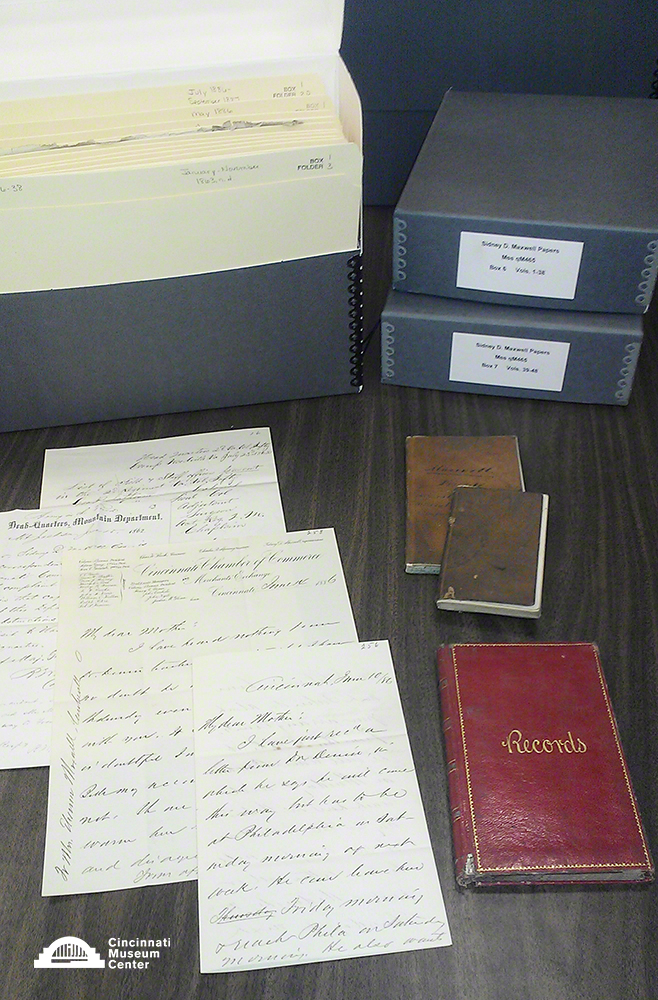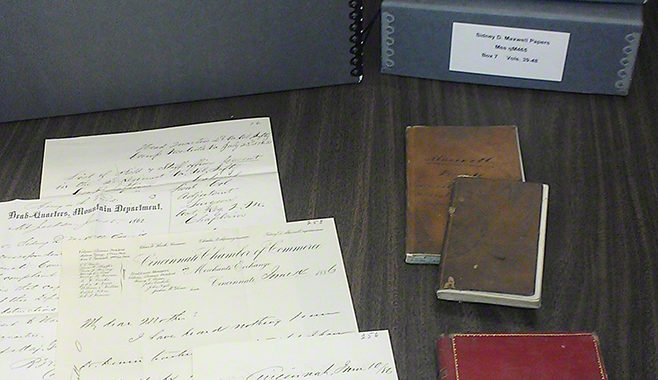
CMC Blog
Collections 101: What’s a Collection? Does your collection have good provenance?
By: Anne Kling, Manager, Collections Databases
Museums and libraries collect materials in an effort to document human history and to learn more about the natural world. Museum Center acquires and preserves its collections of historically- or scientifically-important items as a public trust. These collections are maintained for the long-term for the benefit of present and future generations and are used for scholarly research, educational programs, and exhibits.
The term "collection" refers to groupings of items held by the museum, but these groupings can vary in size and scale. At the broadest level, we use the term "collection" when we are speaking about our major collecting areas, like the Vertebrate Paleontology Collection or the Printed Works Collection - both of these collecting areas contain thousands of items. We also use the term "collection" to refer to a subset of a major collection area. The Map Collection, for example, is part of the Printed Works Collection. The Machine Tool Collection is a subset of the History Objects Collection.
In addition, some of our major collecting areas arrange their materials by even smaller collections based on the provenance of the materials. "Provenance" (PROV-e-nance) refers to the origin and history of an item: who created it, where was it discovered, who used it, who owned it over the years, who donated it to the museum, etc.

The Sidney D. Maxwell Papers, a part of the Archives and Manuscripts Collection
Sidney D. Maxwell Papers
The Archives and Manuscripts Collection is one area which arranges the materials by provenance. For example, the letters and diaries of Sidney Maxwell (a newspaper reporter during the Civil War) are stored together as a collection called the "Sidney D. Maxwell Papers." The letters, diaries and other documents in this collection were created or received or used by Sidney Maxwell. These items relate to each other and provide researchers with additional meaning as a group because of their common provenance, rather than being split up and treated as separate items.
The Paleontology, Zoology and Archaeology Collections also value any information concerning the origin of their specimens and artifacts. It's very important for research purposes to know where a fossil was excavated, for example. Items with good provenance are more likely to be accepted into the museum's permanent collection.
Museum Admission
Includes Cincinnati History Museum, Museum of Natural History & Science and The Children's Museum
| Adult: | $22.50 |
| Senior: | $15.50 |
| Child: | $15.50 |
| Member Adult: |
FREE |
| Member Child: |
FREE |
Members receive discounts!
Become a Member today to save on programs, exhibits and films throughout CMC.
Museum Hours
Open Thursday – Monday
10 a.m. to 5 p.m.
Closed Tuesday and Wednesday
Closed Thanksgiving Day and Christmas Day
Member’s-only early entry: Saturdays at 9 a.m.
Customer Service Hours:
Monday – Sunday, 9 a.m. to 5 p.m.


